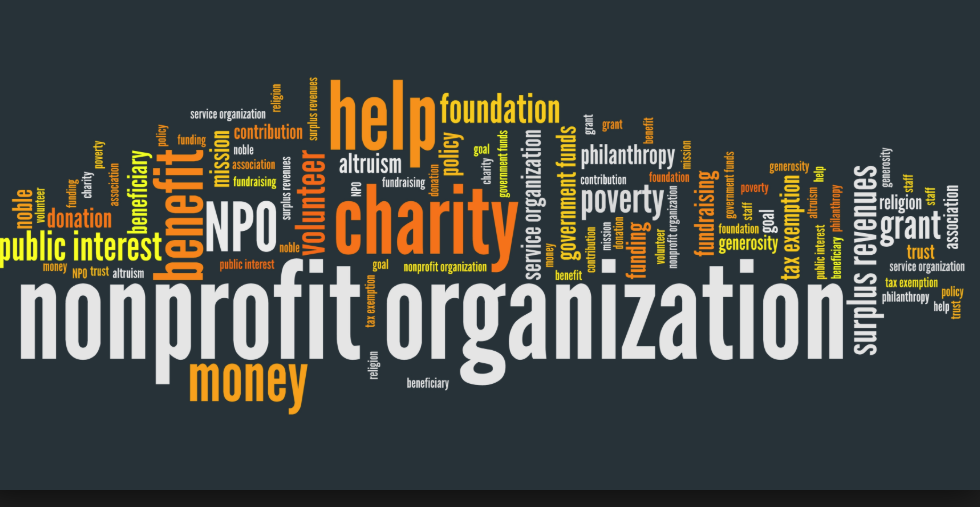Nonprofit Firm: Equipping Organizations to Drive Social Adjustment
Nonprofit Firm: Equipping Organizations to Drive Social Adjustment
Blog Article
The Importance of Cooperation and Partnership for a Nonprofit Firm in Maximizing Resources and Enhancing Area Interaction
In the realm of not-for-profit firms, partnership and collaboration emerge as necessary mechanisms for amplifying resources and promoting area involvement. These alliances not only improve program effectiveness but likewise grow a deeper feeling of neighborhood participation and possession.
Advantages of Partnership

Moreover, cooperation promotes technology by encouraging the exchange of concepts and best practices. When companies work together, they can discover varied point of views, causing innovative remedies that might not emerge in isolation. This common analytic method can inevitably improve service distribution and program end results.
In addition, collective initiatives can enhance community interaction. When nonprofits partner with one an additional, they can mobilize more comprehensive assistance from stakeholders, consisting of volunteers, benefactors, and neighborhood participants. This collective interaction not only enhances presence however additionally strengthens the reputation of the getting involved companies.
Building Strategic Collaborations
Cooperation among not-for-profit companies typically causes the development of strategic partnerships, which are essential for taking full advantage of influence and achieving common objectives. These partnerships allow organizations to take advantage of each various other's strengths, improving service delivery and broadening outreach. By lining up objectives and objectives, nonprofits can develop a collaborating impact that amplifies their reach and effectiveness within the neighborhood.
Building tactical collaborations calls for careful preparation and shared understanding. Organizations ought to initially identify prospective partners that share comparable worths and goals, ensuring compatibility in goal and vision. Establishing open lines of communication cultivates trust, permitting companions to discuss assumptions, sources, and obligations transparently. Collective efforts and regular conferences can aid keep momentum and address difficulties proactively.
Moreover, plainly specified responsibilities and duties are vital for accountability and success. Defining the collaboration via created contracts can provide a framework for partnership, outlining the range of job, efficiency metrics, and examination techniques. By promoting these tactical alliances, nonprofit firms can enhance their capability to resolve neighborhood requirements, innovate options, and activate resources effectively, ultimately bring about a more lasting and substantial influence in the neighborhoods they offer.
Sharing Resources Properly
How can not-for-profit agencies maximize their effect through effective resource sharing? By strategically collaborating with other organizations, nonprofits can boost their functional performance and prolong their reach within the neighborhood. Source sharing entails pooling numerous assets, consisting of funds, personnel, competence, and centers, to address usual goals better.

Additionally, leveraging each other's toughness can promote development. By exchanging knowledge and ideal practices, firms can enhance solution distribution and establish new services to community challenges. Reliable source sharing also cultivates a sense of unity, reinforcing click now the concept that collaboration is important for achieving considerable social impact.
Involving the Area
What methods can nonprofit agencies use to successfully involve their areas? Utilizing numerous systems, such as social media, e-newsletters, and area online forums, permits firms to disseminate info, solicit comments, and foster dialogue.
Furthermore, creating partnerships with regional organizations can boost outreach efforts. nonprofit agency. Teaming up with schools, services, and other nonprofits can intensify resources and develop a much more comprehensive assistance network, permitting joint efforts that reverberate with area requirements
In addition, holding neighborhood occasions, workshops, and volunteer opportunities can help with much deeper engagement. These tasks develop a feeling of belonging and motivate energetic participation, enabling people to add to the agency's objectives while developing partnerships with fellow community participants.
Determining Collaborative Success
Reviewing the performance of collective initiatives is vital for nonprofit agencies seeking to maximize their impact. Determining collaborative success involves developing clear, quantifiable goals and making use of a range of metrics to analyze performance. Key indicators might include the number of collaborations developed, resources shared, and the substantial end results attained via cooperation.
To efficiently determine success, nonprofits need to carry out a framework that integrates both qualitative and quantitative information. Meetings and studies can offer insights into stakeholder fulfillment and the regarded worth of collaborations. In addition, tracking metrics such as service reach, area involvement levels, and economic efficiency can provide a detailed sight of joint effectiveness.
Normal evaluations need to be carried out to determine locations of enhancement and finest techniques. This iterative process not just boosts accountability yet also cultivates a culture of constant understanding within the organization - nonprofit agency. By transparently sharing straight from the source examination results with stakeholders and partners, nonprofits can enhance relationships and build count on
Inevitably, determining collaborative success enables not-for-profit companies to refine their approaches, assign resources much more successfully, and reinforce their mission-driven efforts, causing a greater cumulative influence on the communities they serve.
Final Thought

In the realm of nonprofit companies, partnership and collaboration arise as essential systems for fostering and enhancing resources area engagement - nonprofit agency. By cultivating these strategic partnerships, nonprofit companies can enhance their ability to deal with area demands, innovate services, and mobilize resources successfully, ultimately leading to a more sustainable and significant impact in the neighborhoods they offer
By purposefully collaborating with other companies, nonprofits can enhance their operational efficiency and expand their reach within the area.What methods can not-for-profit companies employ to properly involve their areas?Partnership and partnership stand as necessary columns for nonprofit agencies aiming try these out to make best use of sources and boost community interaction.
Report this page